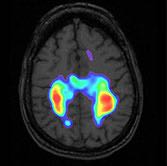LET’S GET STARTED:
Equipped with a bag of BPS, provide a BPS to each person sitting idle while others are working on a task. After passing out a few, stop and demonstrate (without talking) how to trace the BPS using strong strokes to indent into the textures. Move on and repeat the above, going from room to room.
Daily Schedules:
Begin with incorporating BPS into the daily schedule. Go from group to group giving a BPS to each person who has completed the task, as well as those sitting, disinterested in the task. Tracing the BPS device will calm the person, helping to relax and concentrate those provided with a BPS. After passing out a few, stop and demonstrate (without talking) how to trace the BPS using strong strokes to indent into the textures
Have a BPS available for each person to use upon completing the task. Give a BPS to those who have finished the task and those who are just sitting with nothing to do. No words are necessary. Soon, idle users may wish to participate. Allow them to participate. Collect the BPS after the task is completed.
Provide Opportunities for a Sense of Purpose:
As you travel from area to area, and see residents busy using BPS, you’ll also see others who are finished: allow them to join you in passing out the BPS to new users and demonstrate how to use the devices.
Provide Timers When Appropriate:
Providing a hand-held timer and allowing the residents to set the timer when they are ready to trace the BPS, provides a cognitive plan for using the BPS devices. Provide paper (SCORE PAD) and pencil for them to keep track of the time it takes to finish the particular design they were given. Encourage them to keep the paper in a pocket to use the next time and compare results.
Residents have Preferences:
Knowing residents have preferences, set up tables with BPS with different designs and timers with record sheets. Encourage the residents to choose a table and begin. They will remember the routine from last time and/or explain a new routine for them to follow. For instance: pick one BPS, set the timer and begin tracing the design. When finished, stop the timer and record minutes to complete on the score sheet. Some residents will be ready for this routine while others are not. No matter what they do, it is correct for that person. Encourage them to move to a new table and begin again or wait until a bell signals it is time for a move.
MUSIC IN THE BACKGROUND:
Music playing in the background strengthens brain stimulation for each participant. The goal is to fire and wire neurons in the brain to strengthen synapse connections, that helps learning come easier. When this happens, all activities are affected in a positive manner.
PHYSICAL EXERCISE:
Provide this activity following physical exercise, providing an opportunity for the resident to rest while they concentrate. The exercise can include a WALKING PATH that the residents follow, having no idea where and what it will lead to. Watch their delight when they see this new BPS activity with timers and score pads with pencils. If someone does not want to participate, allow them to watch, but more than likely they will desire participation and may join in whenever they wish to do so.
WATCH FOR MORE WAYS TO INCLUDE BRAINPATHS INTO DAILY SCHEDULES: BRAINPATHS.COM


Leave a Reply
Your email is safe with us.